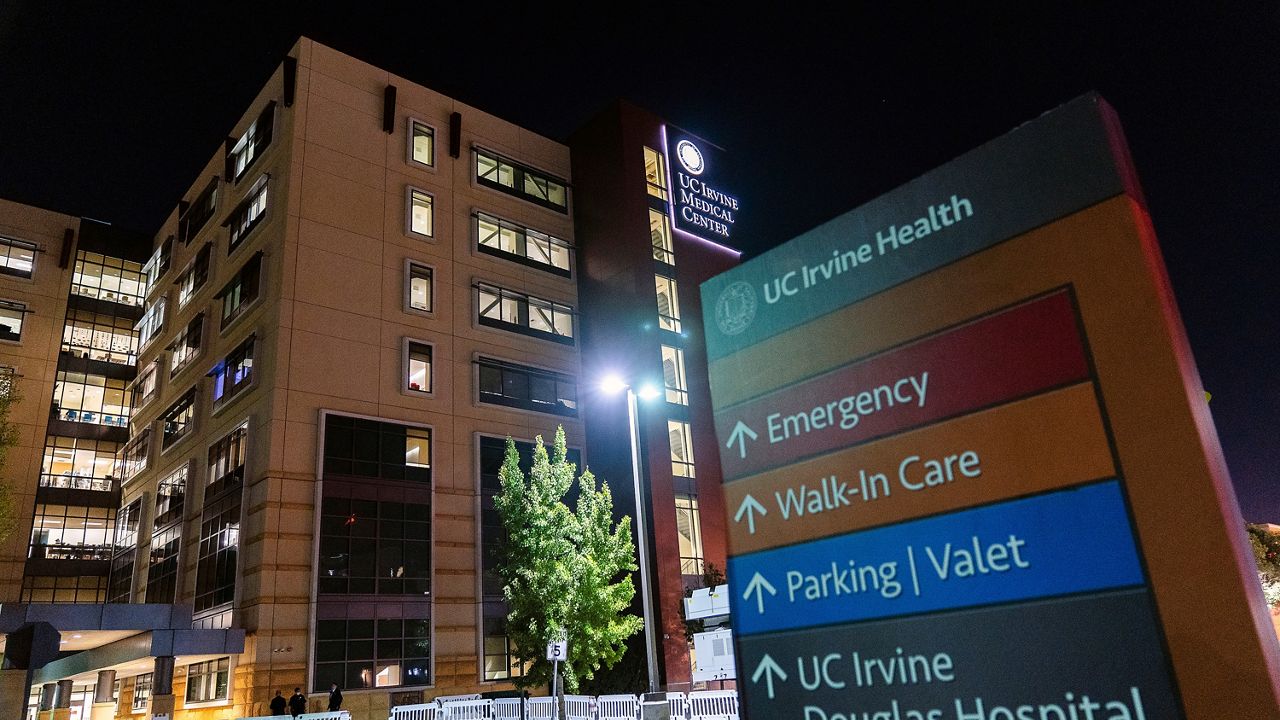SANTA ANA, Calif. (CNS) — The number of COVID-positive patients in Orange County hospitals increased by three to 280, with 31 being treated in intensive care, down from 34 on Friday, according to the latest state data released Saturday.
What You Need To Know
- The county has 23.3% of its ICU beds available, above the 20% level when officials become concerned
- The OCHCA logged 4,583 more infections Tuesday through Thursday, raising the cumulative case count to 611,300
- "It's more of the same — drip, drip, drip in the wrong direction. We're continuing to move in the wrong direction," Andrew Noymer, an epidemiologist, said
- Authorities are expected to approve a booster designed to combat the omicron variant soon
Officials cannot determine how many of those patients were admitted directly for COVID-19 or tested positive while being treated for another ailment. But from June 1-29, there have been 118 unvaccinated patients admitted directly for COVID-19, while 24 were vaccinated, according to the Orange County Health Care Agency.
The county has 23.3% of its ICU beds available, above the 20% level when officials become concerned.
The OCHCA logged 4,583 more infections Tuesday through Thursday, raising the cumulative case count to 611,300. The 19 newly logged fatalities increased the overall death toll to 7,145.
The OCHCA provides regular COVID updates on Tuesdays and Fridays.
The county's testing positivity rate increased from 16.4% Wednesday to 17%, and ticked up from 16.4% to 17.4% in the health equity quartile, which measures the communities hardest hit by the pandemic.
The county's daily case rate per 100,000 people is 34.2 on a seven-day average with a seven-day lag, and 33.3 for the adjusted rate, also with a seven-day average and seven-day lag.
The case rate per 100,000 people for fully vaccinated residents who have received a vaccine booster went from 36.9 June 26 to 36.4 to July 3, the latest data available show. The case rate for residents fully vaccinated with no booster went from 22 to 21.4, and from 36.7 to 35.5 for residents not fully vaccinated.
"It's more of the same — drip, drip, drip in the wrong direction. We're continuing to move in the wrong direction," Andrew Noymer, an epidemiologist and UC Irvine professor of population health and disease prevention, told City News Service on Friday.
Noymer advised residents to wear masks while indoors.
"The best time to start masking in low-stakes environments would be yesterday, and the next best time is right now," he said. "And when I say low stakes I mean picking up milk at the grocery store. Picking up some orange juice at Albertsons is not worth the risk (of going unmasked)."
Dr. Jose Mayorga, executive director of the UC Irvine Family Health Center, told CNS that a National Cancer Institute study published Tuesday showed that COVID-19 is the leading cause of death among Americans ages 45-54.
"It's very astounding," Mayorga said. "But when you see that and then actually look at what the study also shows — a decrease in the ranking for those 85 and older. So, we know by the correlation that those age groups have different variations in vaccination rates. It's screaming at us that vaccines are protecting everyone, especially our most frail."
Authorities are expected to approve a booster designed to combat the omicron variant soon, but anyone eligible for a booster now shouldn't wait as they can also get the omicron-variant dose later as well, officials said.
"I really want people to appreciate the value of getting up to date on vaccination," Mayorga said. "Getting an additional one or two boosters has a huge impact. It will help reduce hospitalization and death rates if you're up to date."
For those who have avoided getting a booster shot because of side effects from the vaccines, Mayorga said, "A simple side effect is a lot better than dealing with hospitalization or loss of a loved one."
The NCI study published in the Journal of the American Medical Association showed that COVID-19 was the third leading cause of death in the country from March 2020, when the pandemic began, to October 2021.
Heart disease was the top cause of death during that period with cancer in the second slot. In all age groups 15 and older, COVID-19 was a top-five killer during that period.
In an analysis of fatalities comparing March through December of 2020 and January through October 2021, the scientists found that COVID-19 went from a fourth leading cause of death among the 45-54 age group to top cause of death in 2021. For those 85 and older, the virus went from the second leading cause of death in 2020 to third last year because seniors have been more widely vaccinated.
Health officials have said that a majority of COVID deaths occurred in people with at least one underlying health condition, mainly hypertension, diabetes and heart disease.



